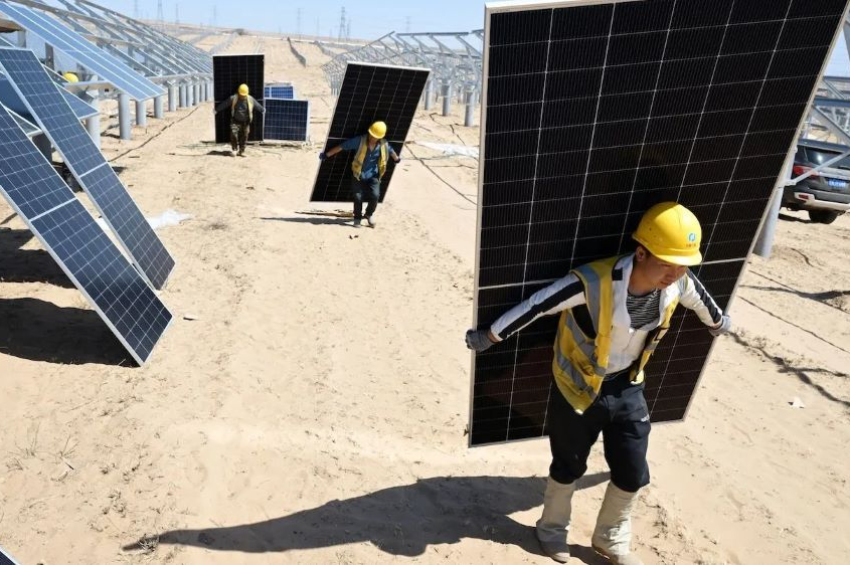China’s clean energy boom triggers first-ever Co2 emissions decline
For the first time in modern history, China’s carbon dioxide (CO₂) emissions are falling not due to economic turmoil or external shocks, but because of rapid growth in clean energy. This turning point signals that the world’s largest emitter may be entering a new era of structural change in its energy mix.
According to analysis by Carbon Brief, China’s CO₂ emissions declined by 1.6% year-on-year in the first quarter of 2025, marking a clear reversal after years of steady growth. On a 12-month rolling basis, emissions were 1% lower than their March 2024 peak, even as overall power demand continued to rise.
More to read:
China starts construction of celestial one-kilometer-wide solar farm
“For the first time, the growth in China’s clean power generation has caused the nation’s carbon dioxide (CO₂) emissions to fall despite rapid power demand growth,” the report states.
This is a major departure from past emission dips, which occurred in 2009, 2012, 2015–2016, and 2022 — all during periods of weak economic activity or extraordinary disruptions like the COVID-19 pandemic.
“The current drop is the first time that the main driver is growth in clean power generation.”
Clean power outpaces demand
The turnaround was powered by a surge in wind, solar, and nuclear generation, which more than met the growth in electricity demand — a key milestone in China’s energy transition.
More to read:
Fake busted: Study debunks "Wind Turbine Syndrome" as a false claim and unjustified fear
“These developments mark a major change. In the first quarter of 2025, clean power growth exceeded demand growth, pushing fossil generation and associated CO₂ emissions into decline.”
According to the data, power sector emissions — which make up about 40% of China’s total — fell by 2% year-on-year over the 12 months to March 2025.
Breaking from the past
Previous dips in emissions were short-lived and driven by downturns in heavy industry or major policy shocks. For instance, emissions fell in 2015 due to a real estate slump and again in 2022 amid COVID lockdowns. But this time, the decline is happening during a period of strong energy demand, reinforcing that clean energy is now capable of displacing fossil fuels on its own.
More to read:
American designer proposes turbines for harvesting wind energy in cities
“This stands in contrast to previous instances of falling emissions, which were driven by economic weakness or external shocks,” the authors noted.
Can the decline continue?
While the emissions decline is modest, experts are cautiously optimistic. China added more than 350 gigawatts of wind and solar in 2023 alone, far ahead of schedule for its 2030 climate targets. If clean energy additions continue at this pace and coal consumption is kept in check, the country may have reached its long-awaited emissions peak.
Still, the emissions margin remains slim, and a sudden surge in industrial activity or weather-driven energy demand could reverse the trend.
More to read:
South Korean researchers get closer to developing solar energy collecting windows
Emissions are now 1% lower than the March 2024 peak, suggesting that a short-term rebound is still possible.
Implications for global climate goals
China’s emissions path is pivotal for global climate efforts. The country is currently developing its next Nationally Determined Contribution (NDC) under the Paris Agreement for the 2026–2030 period. A sustained structural decline in emissions could vastly improve global chances of limiting warming to 1.5°C.
Whether this marks a true turning point or a brief plateau will depend on China’s policy decisions, economic shifts, and the pace of its clean energy deployment in the coming years.
The energy policy shift in China is more than welcome, given that the country had been the worst polluter on Earth in the past decade.







